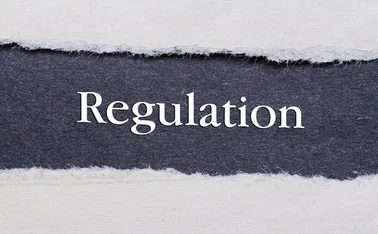
Post Europe: Rome II – Where are we two years on?

It is now over two years since the implementation of European Regulation 864/2007, better known as ‘Rome II’. Reviewing the legislation, Kelvin Farmaner and Paul Lavelle ask whether everyone is now clear on its scope and application.
Rome II is perhaps the most important development in international personal injury claims for many years. To recap, the regulations set out the conflict of law rules applicable to non-contractual obligations in civil and commercial matters, for example torts. The aim was not to harmonise substantive law across Europe, but rather the conflict of law rules. The idea was that no matter where in the European Union an action is brought, the rules determining applicable law will always be the same.
Order of law
Generally, and in order of importance under Article 4, the applicable law is first the law of the country where the damage occurs; second the law of the country where both parties were habitually resident, and last the law of the country with which the case is manifestly more closely connected than the other countries.
The regulations also allow, under Article 14, parties to choose, by mutual agreement, the law that will apply to their obligation. Under Article 15 the scope of the law applicable includes the basis and extent of liability, as well as the existence, the nature and the assessment of damage or the remedy claimed. The last point represents a major change in the law.
Reversing decisions
This effectively reverses the UK House of Lords decision in Harding v Wealands where the court decided the assessment of damages was for the law of the forum. Article 18 provides that the "victim" of a tort may bring his or her claim directly against the insurer of the person liable if permitted by the law applicable to the tort or the law applicable to the insurance contract. The decision of the European Court of Justice in FBTO v Odenbreit allows the victim to sue in their home country. However, in practice this is restricted to road traffic cases.
Unfortunately, despite the legislators laudable attempts to achieve harmonisation and clarity, a number of areas of dispute have arisen. Perhaps the most fundamental of these has been the question of the effective commencement date of Rome II.
"The last point represents a major change in the law."
Unclear commencement
Article 31 states: "This regulation shall apply to events giving rise to damage which occur after its entry into force." Article 32 states: "This regulation shall apply from 11 January 2009." The apparent contradiction left legal practitioners and insurance professionals unclear as to whether Rome II applied to accidents from 20 August 2007 or 11 January 2009.
The reason for this is that in EU legislation the words ‘application' and ‘entry into force' do not have the same meaning. In general regulations enter into force on the date specified in them or, in the absence thereof, on the twentieth day following that of their publication in the Official Journal.
No specifics
No date is specified in the regulation for its entry into force. Publication was on 31 July 2007, so the default provisions would make 20 August 2007 the date of coming into force. However, if that is right, what was the significance of the 2009 date mentioned in Article 32?
In the case of Homawoo v GMF the UK High Court noted that there was no judicial authority on the temporal scope of the regulation and it chose to make a reference to the ECJ.
"What was the significance of the 2009 date mentioned in Article 32?"
Defining the scope
The first judicial decision on the temporal scope of Rome II came in the UK High Court case of Bacon v Nacional Suiza. The defence in that case was orchestrated by Van Ameyde UK. The court decided that the regulation is applicable to claims arising from events occurring from 20 August 2007, as long as the issue of which law is applicable comes before the court from 11 January 2009.
The application of Rome II is, of course, inevitable across the EU and the European Economic Area in the future. This judgment is ultimately to the advantage of all non-UK insurers and they will gain a considerable advantage in liability claims involving UK citizens.
The reasoning of the court in the Bacon case is robust and it seems likely to prevail if the matter is left to the English Courts. As things stand the combined effect of these regulations and decisions is that there should be less so-called ‘forum-shopping' and more certainty in the sometimes opaque world of conflict of laws. If this proves to be the case it will be welcome.
Kelvin Farmaner is partner and head of insurance litigation at Trethowans and Paul Lavelle is claims manager at Van Ameyde UK
Only users who have a paid subscription or are part of a corporate subscription are able to print or copy content.
To access these options, along with all other subscription benefits, please contact info@postonline.co.uk or view our subscription options here: http://subscriptions.postonline.co.uk/subscribe
You are currently unable to print this content. Please contact info@postonline.co.uk to find out more.
You are currently unable to copy this content. Please contact info@postonline.co.uk to find out more.
Copyright Infopro Digital Limited. All rights reserved.
As outlined in our terms and conditions, https://www.infopro-digital.com/terms-and-conditions/subscriptions/ (point 2.4), printing is limited to a single copy.
If you would like to purchase additional rights please email info@postonline.co.uk
Copyright Infopro Digital Limited. All rights reserved.
You may share this content using our article tools. As outlined in our terms and conditions, https://www.infopro-digital.com/terms-and-conditions/subscriptions/ (clause 2.4), an Authorised User may only make one copy of the materials for their own personal use. You must also comply with the restrictions in clause 2.5.
If you would like to purchase additional rights please email info@postonline.co.uk








